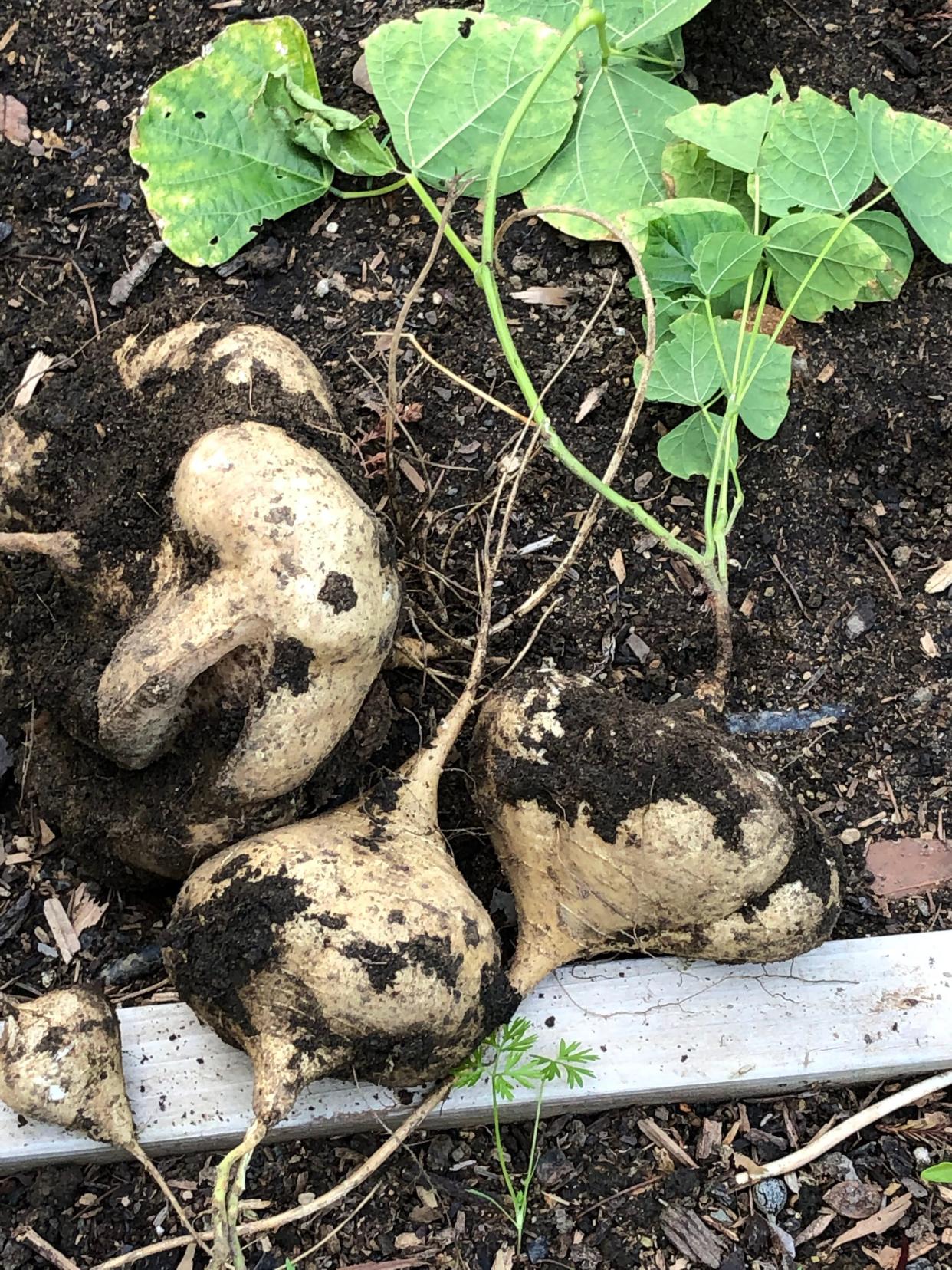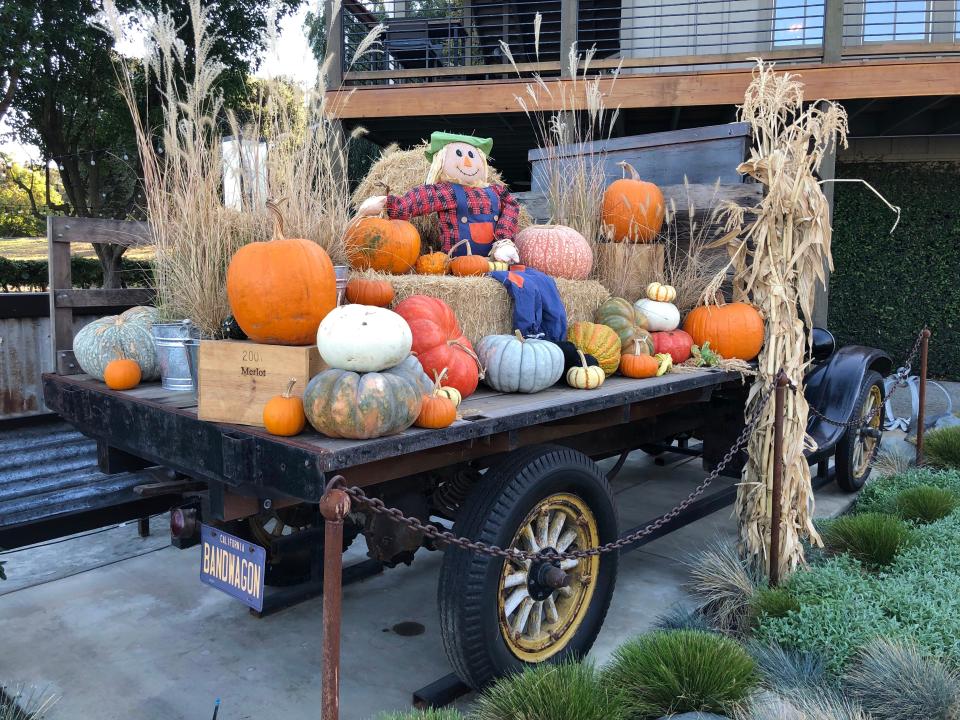Don't let the crop rot: How to properly store fruits and vegetables

Proper storage of fruits and vegetables in our homes can be a hard lesson for all to learn, whether we are gardeners or buy our produce from others. Default thinking that the fridge is always best, is foolish, as I recently learned with my precious jicama crop.
If you have ever grown jicama, Pachyrhizus erosus, and succeeded, you know that you took a victory lap after harvest. My first attempt to grow jicama this May, started by planting 25, very expensive, seeds. Only three viney plants germinated and survived till October. Native to Mexico, jicama loves warm, sandyloam soil, hot weather and consistent water. In late October, we harvested four giant sized jicama tubers, and quickly enjoyed one for a week, storing the other three in the fridge.
That was wrong thinking.
A little research would have taught me that jicama prefers to be stored only at room temperature. I recently rescued the precious temperamental jicama from the fridge to find them a little slimy, but still edible, though they will not store for long now. Lesson learned.
To help those of you who are rethinking your fruit and veggie storage habits, especially with the holidays approaching when copious amounts of produce will be purchased for Thanksgiving tables, please take the time to study the storage recommendations available online, or below. If you are searching for anything online, and want to know what research from the University of California recommends, type, “UC”, and then your query.
Below is a cornucopia of fruit and veggie foods and the UC recommendations for postharvest storage. More info can be found online: https://postharvest.ucdavis.edu/files/230110.pdf.
Three options are usually available to choose from in your home: “store in the fridge”, “ripen on the counter; then store in the fridge”, or, “store only at room temperature”.
Store in the fridge: 38-42 degrees
“Refrigerated fruits and vegetables should be kept in perforated plastic bags in the produce drawers of the refrigerator. You can either purchase perforated plastic bags or make small holes with a sharp object in unperforated bags (about 20 pin holes per medium-size bag). Separate fruits from vegetables (use one drawer for each group) to minimize the detrimental effects of ethylene produced by the fruits on the vegetables. Use all refrigerated fruits and vegetables within a few days since longer storage results in loss of freshness and flavor.”
Fruits: apples (> 7 days), apricots, Asian pears (nashi), blackberries, blueberries, cherries, cut fruits, figs, grapes, raspberries, strawberries.
Vegetables: artichokes, asparagus, green beans, lima beans, beets, Belgian endive, broccoli, Brussel sprouts, cabbage, carrots, cauliflower, celery, cut vegetables, green onions, herbs (not basil- store on counter in water), leafy vegetables, leeks, lettuce, mushrooms, peas, radishes, spinach, sprouts, summer squashes, sweet corn.
Ripen on the counter first, then store in the refrigerator
“The counter storage area should be away from direct sunlight to prevent produce from becoming too warm. Fruits and vegetables that are recommended to be stored on the counter can be kept for a few days. Even so, moisture loss can be reduced by placing produce in a vented plastic bowl or a perforated plastic bag. Do not place produce in sealed plastic bags on the counter because this slows ripening and may increase off-odors and decay due to accumulation of carbon dioxide and depletion of oxygen inside the sealed bag.”
Avocados, kiwifruit, nectarines, peaches, pears, plums, plumcots.

Store only at room temperature
Fruits and melons: apples (< 7 days,) bananas, grapefruit, lemons, limes, mandarins, mangoes, muskmelons, oranges, papayas, persimmons, pineapple, plantain, pomegranates, watermelons.
Vegetables: basil (in jar of water), cucumbers, (Cucumbers, eggplant and peppers can be kept in the refrigerator for 1 to 3 days if they are used soon after removal from the refrigerator), dry onions (Store garlic, onions, potatoes, and sweet potatoes in a well ventilated area in the pantry. Protect potatoes from light to avoid greening), ginger, jicama, pumpkins, tomatoes, winter squashes.
Winter squash is best stored at 55-59 degrees in a well-ventilated room. Acorn, spaghetti, and delicata are best eaten in the fall. Hubbard, butternut and kabocha squash are best eaten in December/January; their sweetness will actually increase during storage.” Butternut will last the longest, up to six months. Take the time to learn how to best store your garden veggies.
Enjoy the harvest.
Do you have a gardening related question? Contact the San Joaquin UC Master Gardeners at 209-953- 6112. More information can also be found on our website ucanr.edu/sjmg.
This article originally appeared on The Record: Fruit, vegetable storage best practices to prevent rotting

